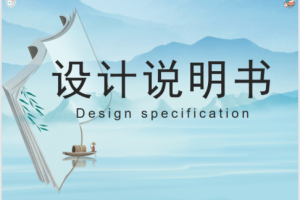实物链接:点击跳转
开题报告:点击跳转
设计说明书:点击跳转
总字数:13000+
摘要
随着当前工业的发展,虽然提高了人们的生活和国家的经济发展,但是由于工业,造成的污染也给人们的生活带来巨大的危害,当前很多城市出现雾霾,及其由于这些尘埃给人们的生活环境及其生命健康带来很多的危害。
此次设计为了解决这些降尘问题,设计一款工地降尘设计,该设计主要设计主要通过软件配合硬件进行。软件设计:软件部分,采用Keil5作为此次设计程序编程软件,采用AD作为此次设计的原理图和PCB的绘制软件,采用stc-isp作为此次设计程序的烧录软件,采用Visio作为此次设计的流程图绘制软件;硬件设计:采用STM32F103C8T6作为此次设计的主控模块,采用MP2.5作为此次设计的监测模块,采用OLED作为此次设计的显示模块,采用继电器控制水泵作为此次设计的外设部分;通过软件配合硬件进行设计实现对PM10的实时监测,监测到浓度太大,控制不同的水泵进行工作,监测到PM2.5浓度过大时进行声光报警提醒,并将监测的数据显示在OLED液晶显示屏上,从而实现对降尘的控制,所以该设计是具有研究价值和现实意义的。
关键词:工地降尘;PM2.5;OLED显示屏
Abstract
With the development of the current industry, although it has improved people’s lives and the economic development of the country, the pollution caused by industry also brings great harm to people’s lives. At present, many cities have haze, and because of the dust, it brings a lot of harm to people’s living environment and life and health.
In order to solve these dust removal problems, the design of a site dust removal design, the design is mainly through software with hardware. Software design: In the software part, Keil5 is used as the programming software of the design, AD is used as the drawing software of the schematic diagram and PCB of the design, STC-ISP is used as the burning software of the design program, and Visio is used as the drawing software of the flow chart of the design. Hardware design: STM32F103C8T6 is used as the main control module of this design, MP2.5 is used as the monitoring module of this design, OLED is used as the display module of this design, and relay control water pump is used as the peripheral part of this design. Through the software with hardware design to realize real-time monitoring of PM10 concentration detected is too big, control of different water pump work, monitoring to PM2.5 concentration is too large for the sound and light alarm to remind, and will monitor the data display on the OLED LCD screen, so as to realize the control of dust, so the design is a research value and practical significance.
Key words: site dust removal; PM2.5; OLED display
目录
第一章 绪论
第二章 系统设计方案
第三章 硬件设计
第四章 系统程序设计
第五章 实物测试
第六章结论
参考文献
致谢
附录

